✓ Joining us on our Whatsapp Channel: 💬 Explore and Escape!.
Booking through us:
✓ 🏩 🛌 Handpicked Luxury Stays in Budget: Booking.com | Agoda.com
✓ 🍹⛱️ Deals on Private xfers, SIM Cards, City tours, Day trips : 📍🗺️ GetYourGuide | 🛵🧳 Klook
There are great many things to do in Italy, and so are in Grado.
Welcome to Grado, a hidden gem on the Adriatic coast that’s waiting to be explored!
With its winding streets, charming architecture, and stunning beaches, Grado offers a plethora of experiences that will transport you to a world of bliss and relaxation.
Whether you’re a history buff, a foodie, or simply in search of laid-back adventure, there’s something for everyone in this picturesque town.
So, grab your sunscreen and let’s discover all the wonderful things to do in Grado!
Without further ado listed below are some of the most fun things to do in Grado:
1. Basilica di Sant’Eufemia
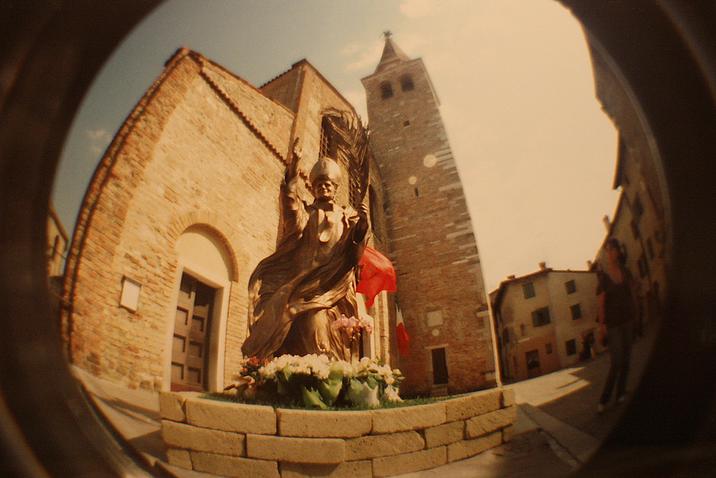
A historic church located in the picturesque town of Grado, Italy.
What to see or do: Admire the unique blend of architectural styles that make up the basilica’s structure, including Roman, Byzantine, and Lombard influences. Marvel at the intricate details of the 6th-century mosaics that adorn the church’s interior walls and floors.
Take in the peaceful atmosphere of the courtyard and cloister.
Don’t miss: The remarkably well-preserved mosaic floor in the basilica’s apse, which depicts scenes from the life of Christ and other religious figures.
Also, make sure to visit the nearby baptistery, which houses a stunning mosaic ceiling.
Insider travel tips: Keep in mind that the basilica may be closed during weekday afternoons, so plan your visit accordingly. Additionally, be sure to wear appropriate attire (covered shoulders and knees) when entering the church grounds.
Don’t forget to take in the lovely views of the lagoon and surrounding area from the top of the bell tower.
2. Spiaggia Costa Azzurra

Spiaggia Costa Azzurra is a popular beach located in the charming coastal town of Grado, Italy.
What to see or do: Visitors can enjoy swimming, sunbathing, walking along the sandy shore, or renting a sunbed and umbrella for ultimate relaxation. There are plenty of beachside bars and restaurants to choose from, offering local cuisine and refreshing drinks.
Don’t miss: Don’t miss the stunning views of the Adriatic Sea and the charming pastel-colored architecture of the town in the background.
Insider travel tips: – It can get crowded during peak season, so arrive early to secure a good spot on the beach.
3. Laguna di Grado
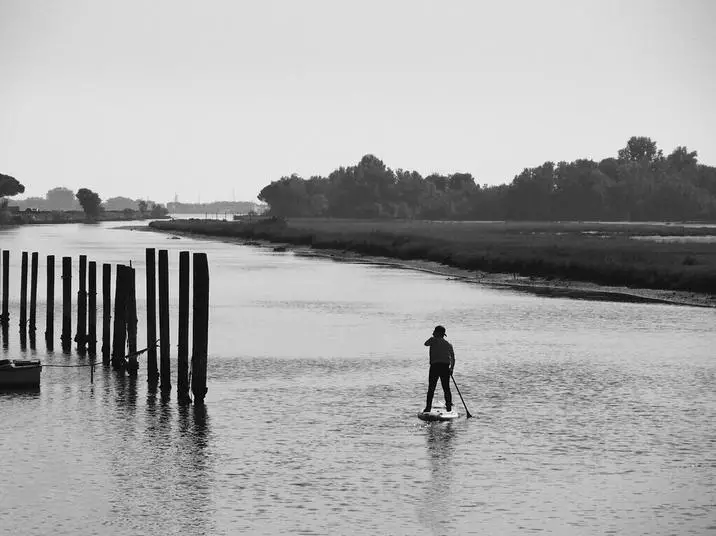
A coastal wetland located in the Friuli-Venezia Giulia region of Italy.
What to see or do: Take a boat tour to explore the lagoon and see the diverse wildlife, including numerous bird species. Visitors can also go fishing, kayaking or wind surfing.
Don’t miss: The charming fishing village of Grado, with its ancient Roman ruins, historic churches, and picturesque canals.
Insider travel tips: Visit during the off-season to avoid crowds and enjoy the peaceful atmosphere of the lagoon. Try the local seafood dishes at the restaurants in Grado for an authentic taste of the region.
4. Spiaggia Principale
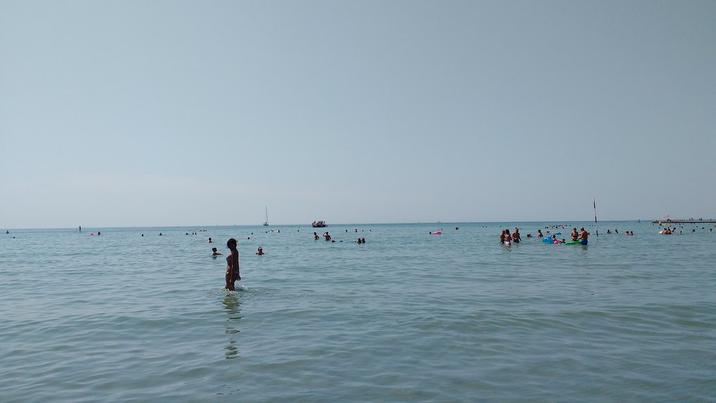
Spiaggia Principale is the main beach in Grado, a popular seaside town on the Adriatic coast of Italy.
What to see or do: This wide sandy beach has all the amenities you need for a comfortable day at the seaside, including sun loungers and umbrellas for rent, showers, changing rooms, and bars.
Take a dip in the clear waters of the Adriatic or play beach volleyball with friends and family.
Don’t miss: Don’t miss the breathtaking sunset over the sea, the colors of which are accentuated by the boats that dot the horizon.
A stroll along the pier is also a must.
Insider travel tips: For a quieter and more peaceful beach experience, head to the western end of the Spiaggia Principale. And, if you’re looking for a bit of adventure, rent a kayak or paddleboat to explore the surrounding waters.
5. Torre del Porto
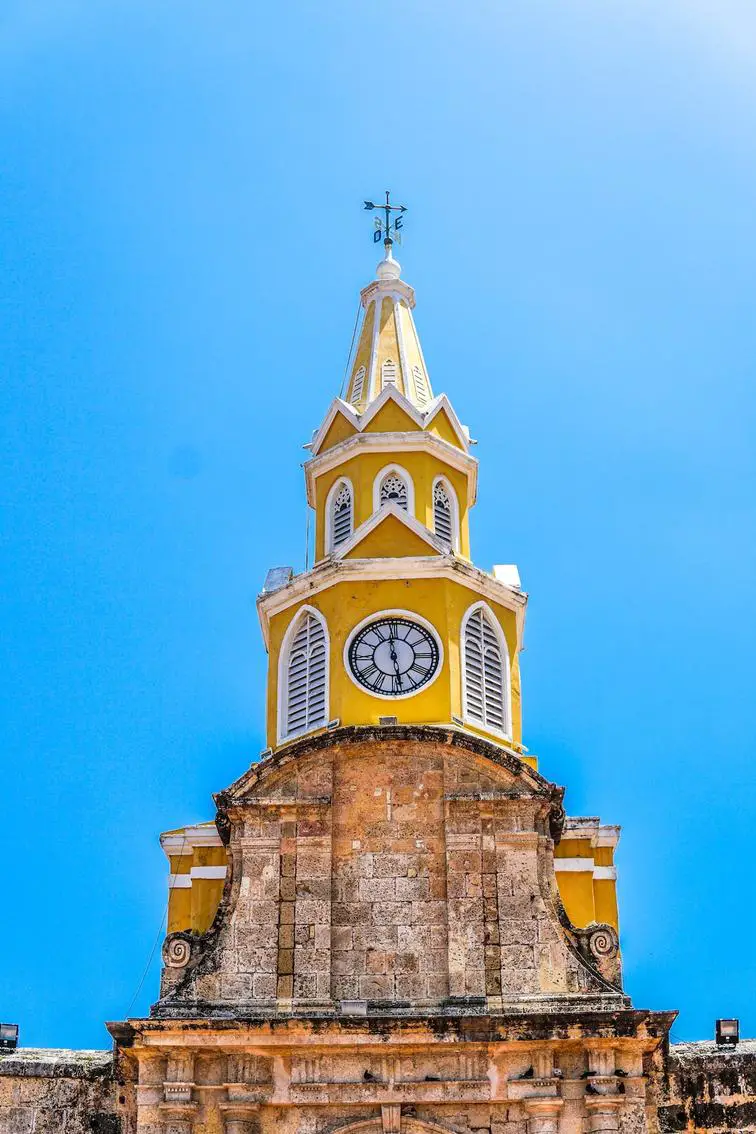
A historic tower in the town of Grado, Italy, dating back to the 16th century.
What to see or do: Visit the tower for a glimpse into Grado’s rich past.
Take a tour of the tower and learn about its history as a key defense against pirate attacks, and its later use as a prison.
Don’t miss: The stunning panoramic views of the town and surrounding area from the tower’s observation deck.
Insider travel tips: Make sure to wear comfortable shoes, as the tower has narrow stairs and may not be suitable for those with mobility issues.
Also, consider visiting during sunset for the most breathtaking views.
6. Riserva Naturale Regionale Foce dell’Isonzo
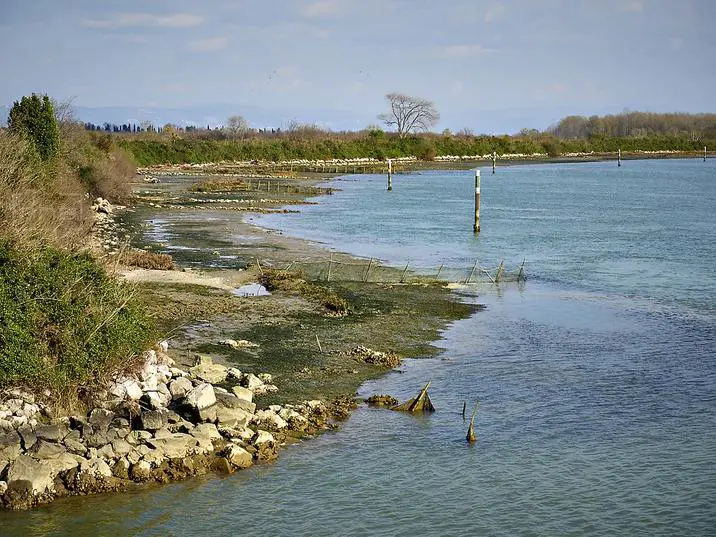
Riserva Naturale Regionale Foce dell’Isonzo is a regional nature reserve located at the mouth of the Isonzo River in the Italian region of Friuli-Venezia Giulia.
What to see or do: The reserve is home to a diverse array of flora and fauna, with over 270 bird species, and numerous fish species inhabiting the waters of the reserve.
Visitors can explore the reserve on foot or by boat and take in the beautiful scenery of the lagoon, dunes, and wetlands.
Don’t miss: Don’t miss the chance to spot some of the reserve’s rare bird species, such as the kingfisher, herons, and the black-winged stilt.
Insider travel tips: To avoid crowds, it’s best to visit the reserve outside of peak season (July and August). Make sure to bring mosquito repellent, especially if planning to hike or explore the reserve on foot.
7. Spiaggia di Grado Pineta

Spiaggia di Grado Pineta is a beautiful beach located in Grado, Italy, known for its crystal-clear waters and golden sand.
What to see or do: Visitors can sunbathe on the beach, swim in the sea or rent boats and water sports equipment to explore the nearby islands and lagoons of Grado.
It’s also great for cycling and walking along the seaside promenade.
Don’t miss: Don’t miss the opportunity to taste some of the best seafood dishes in the region, served in the nearby restaurants and bars overlooking the sea.
Insider travel tips: – Arrive early to secure a spot on the beach during peak season.
8. Chiesa di Santo Stefano

Chiesa di Santo Stefano, also known as the Church of St. Stephen, is a small but beautiful church located in the historic center of Grado, Italy.
What to see or do: Visitors can admire the architectural beauty of the church, which dates back to the 8th century. The interior decorations include stunning frescoes, intricate mosaics, and a wooden altarpiece.
Don’t miss: One of the highlights of the Chiesa di Santo Stefano is the ancient sarcophagus located in the central nave. It is believed to date back to the 3rd century AD and is decorated with intricate carvings.
Insider travel tips: Be sure to check the opening hours before visiting as they can change depending on the time of year.
The church is also free to visit, and visitors should dress modestly as it is still an active place of worship.
Additionally, hiring a guide can provide a deeper understanding of the church’s history and significance.
9. Parco Comunale delle Rose

Parco Comunale delle Rose is a beautiful park located in the town of Grado, Italy that features stunning rose gardens and a peaceful atmosphere.
What to see or do: Visitors of Parco Comunale delle Rose can take a leisurely stroll through the park and admire the various species of roses on display.
The park is also home to a small lake and fountain, as well as several benches and picnic areas for relaxing.
Don’t miss: Make sure to check out the “scented garden,” where visitors can experience the fragrant scents of a variety of rose species.
Additionally, the park is known for its beautiful views of both the Adriatic Sea and the mountains.
Insider travel tips: – Plan your visit in late May/early June when the roses are in full bloom.
10. Museo della Laguna di Marano

Museo della Laguna di Marano is a museum dedicated to the natural and cultural heritage of the Marano lagoon in the town of Grado, Italy.
What to see or do: Visitors can explore the museum’s exhibits, which include interactive displays and multimedia installations showcasing the lagoon’s unique flora and fauna, as well as its history and local traditions.
Don’t miss: Don’t miss the opportunity to take a guided tour of the lagoon and its surrounding areas, which are home to numerous bird species and other wildlife.
Insider travel tips: – The museum is located in the historical center of Grado, so visitors can also explore the town’s beautiful architecture and charming atmosphere.
11. Museo Archeologico di Aquileia

Museo Archeologico di Aquileia is an archaeological museum located in the town of Grado, Italy.
It houses artifacts excavated from the ancient Roman city of Aquileia, one of the most important cities of the Roman Empire.
What to see or do: Visitors can admire a vast collection of Roman artifacts, including mosaics, frescoes, sculptures, and decorative arts.
The museum also houses a section dedicated to early Christian art, with remarkable pieces such as the famous mosaic of the Epiphany.
Don’t miss: Make sure to check out the remains of the ancient Roman city of Aquileia, which include impressive structures such as the Forum, the Basilica, and the Port of Augustus.
Insider travel tips: Try to visit the museum during the low season to avoid the crowds and enjoy a more peaceful experience. Also, wear comfortable shoes as there is a lot of walking involved in exploring the archaeological park of Aquileia.
12. Aquileia

Historical town and UNESCO World Heritage Site located in the Friuli Venezia Giulia region of Italy.
What to see or do: Visit the Basilica of Aquileia, which houses beautiful mosaics from the 4th century. Explore the Archaeological Area and Museum to discover more about the Roman and early Christian history of the town.
Enjoy the atmosphere of the small town and take a walk along the Natisone River.
Don’t miss: The Crypt of the Excavations, where you can see the remains of a Roman house, including a stunning mosaic floor. The Baptistery of San Giovanni, one of the oldest Christian buildings in the region.
Insider travel tips: Make sure to try the local cuisine, especially the seafood dishes, in nearby Grado. Take a day trip to the nearby Aquileia Mosaic School, where you can learn about and create your own mosaic.
Avoid visiting during peak tourist season in the summer and opt for a quieter visit in the spring or fall.
13. Duomo di Aquileia
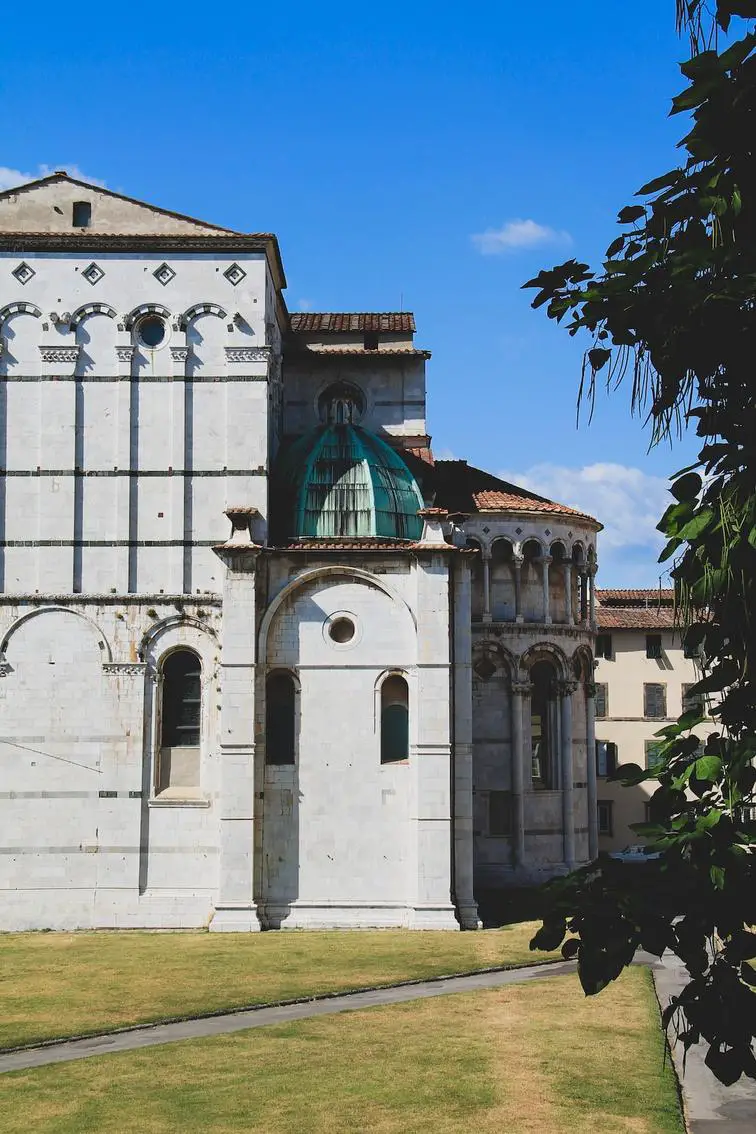
An ancient cathedral located in the town of Grado, Italy.
What to see or do: Marvel at the stunning Byzantine-style architecture and intricate mosaics that adorn the walls and floors of the cathedral. Take a guided tour to learn about the fascinating history of this ancient site.
Don’t miss: The famous mosaics depicting scenes from the Bible, including the Garden of Eden and Noah’s Ark.
Insider travel tips: Be sure to visit early in the day to avoid the crowds, and consider hiring a local guide to make the most of your visit.
Remember to dress appropriately as this is a religious site.
14. Area Archeologica di Aquileia

The Archaeological Area of Aquileia is an ancient Roman city located in the modern Italian town of Aquileia, near the seaside city of Grado.
What to see or do: The archaeological site offers a glimpse into the daily life of the ancient Romans.
Visitors can explore the remains of the forum, basilicas, temples, and other public buildings, as well as the residential areas of the city.
The site also includes a museum that displays artifacts found during excavations.
Don’t miss: The highlight of the site is the mosaic pavement of the Cathedral, which is considered one of the most significant examples of early Christian art in the world.
The mosaic covers an area of almost 750 square meters and depicts various scenes from the Old and New Testaments.
Insider travel tips: – Wear comfortable shoes and bring water, as the site is quite large and can be tiring to explore.
15. Basilica di Aquileia

What to see or do: Visitors can explore the church’s stunning architecture and impressive artwork that dates back to the early Christian era. The highlight of the Basilica is the stunning mosaic floor that depicts intricate scenes from the Bible.
Don’t miss: Make sure to take the time to admire the beautiful wall frescoes and the detailed carvings of the church’s wooden altar.
The crypt below the church is also worth visiting.
Insider travel tips: Avoid visiting during peak summer tourist season to avoid crowds and have a more peaceful experience. It is worth hiring a guide to fully appreciate the church’s history and artwork.
Wear comfortable shoes as the church requires quite a bit of walking.